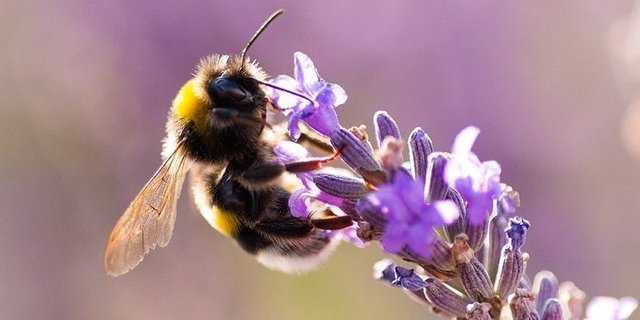The Flight Of Bumblebees Teaches Scientists How To Make Best Drones

Scientists use high-speed video to observe and learn from the clumsy flight of bumblebees They want to use this in order to design better drones. The bumblebees are distinguished by their rather left flight. They darken into objects or walls about once a second. But before the scientists started filming them with high-speed cameras, we did not know much about the way they fly or the obstacles they face.
"The time you blinked, a bee flaps sixty-five times," says biochemist ecologist Stacey Combes, who was an associate professor at Harvard University when much of this research was conducted.
The clumsy bumblebees do not come from poorly developed flight capabilities but from a variety of challenges they have to deal with, including a particularly strong and unpredictable airflow, while trying to land on an unstable flower too Tossed by the winds.
"Bumblebees are very important flower pollinators," explains Professor Stacey Combes. "Understanding how they fly, how they operate in their environment, and what affects their flight, is of paramount importance."
In order to conduct her research on the subject, she teamed up with her PhD students, Andrew Mountcasle and Nick Gravish, at Harvard University. Together, they designed and built a system that allows them to film a glimpse of how bumble bees navigate in a congested space.
"Bumblebee collisions last only a fraction of a second. With high-speed cameras, we can begin to see what these collisions look like and how they affect the drone, "Dr. Mountcastle said.
Most collisions involve the wings of the drone. How can something as fragile as the wing of an insect hit a hard object without breaking?
Using high-speed video, the research team discovered that the bumblebee had joins near the middle of each wing. These joints are composed of a protein, the resilin. It is a soft, elastic protein that provides flexibility to the wing of the bee so that it does not break when the insect strikes hard objects hard.
"In the wings of the bees we find between five and nine resiline joints, especially in the middle and at the back, which allows the wings to be bent lengthwise," adds Professor Combes.
"You can see this as the perfect elastic."
The resiline joints present in the wings of the bumble bees constitute a major innovation of evolution for these insects. In addition, they provide an opportunity for researchers to learn important lessons for the design of lighter, robust robots and drones.

I very much like it
u are welcome
Fascinating. When I was a kid, they said bumblebees couldn't fly, even though nobody seems to have told them. We just keep learning more! I love it!
Great post. I'll be following.
u are welcome :D
nice post ,,, you have good blog , Good luck. Comrade
thanks good luck for you too